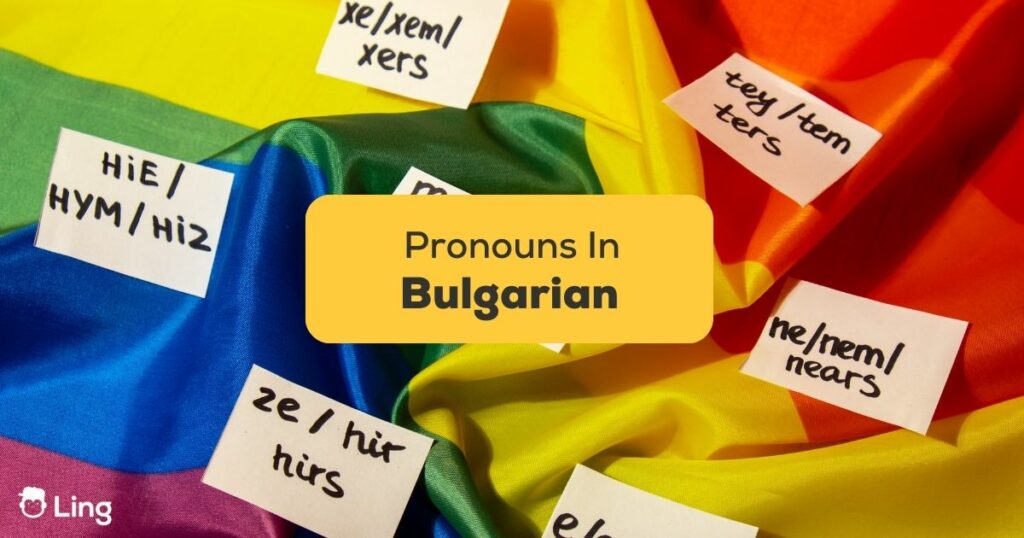Estonian pronouns are one of the keys to understanding the language. They help you talk to people and say what’s yours, his, or hers. If you want to speak Estonian, you need to know these words. It’s like learning to say “hello” or “thank you” when visiting a new place.
Are you ready to learn Estonian today? Good! Because this guide will teach you all about pronouns in Estonian. Trust me – It’s not hard, and it’s not boring. It’s a fun way to learn about a different way of speaking and thinking. So, get comfortable, and let’s start learning together.
Estonian Personal Pronouns
Let’s get personal from the very beginning. Let’s talk about personal pronouns in Estonian. These are the words that take the place of Estonian names. They’re like shortcuts to help us talk about ourselves and others. In English, we have “I,” “you,” “he,” “she,” “it,” “we,” and “they.” But in Estonian, things are a bit different.
Singular Forms: Mina, Sina, Tema
When you’re talking about just one person in Estonian, you use these words. “Mina” is “I,” “Sina” is “you,” and “Tema” is “he,” “she,” or “it.” Here are sample sentences for job titles in Estonian. Let’s see them in action:
- “Mina olen õpilane” – “I am a student.”
- “Sina oled õpetaja” – “You are a teacher.”
- “Tema on arst” – “He/She is a doctor.”
Plural Forms: Meie, Teie, Nemad
But what if you’re talking about more than one person? Then, you use these words. “Meie” is “we,” “Teie” is “you” for many people or when being polite, and “Nemad” is “they.” Check out these examples:
- “Meie oleme õpilased” – “We are students.”
- “Teie olete head” – “You are good.”
- “Nemad on lapsed” – “They are children.”
Short Forms: Ma, Sa
Estonian has some cool shortcuts too. “Ma” is a quick way to say “Mina” (I), and “Sa” is the short form of “Sina” (you). Want to see how they work?
- “Ma olen kodus” – “I am at home.”
- “Sa oled tubli” – “You are diligent.”

Estonian Possessive Pronouns
Moving on, let’s explore possessive pronouns in the Estonian language. Do you know how we say “my,” “your,” or “their” in English? Those are possessive pronouns, and they show who owns something. In Estonian, it’s a bit different. Let’s take a closer look.
Singular Possessives: Minu, Sinu, Tema
When something belongs to one person, you use singular possessives. In Estonian, “Minu” is how you say “my.” “Sinu” is “your” for one person, and “Tema” is “his” or “her.” It’s like putting a name tag on something:
- “Minu raamat” – “My book.”
- “Sinu koer” – “Your dog.”
- “Tema maja” – “His/Her house.”
Plural Possessives: Meie, Teie, Nende
But what if something belongs to a group? Then you use plural possessives. “Meie” is “our,” “Teie” is “your” for many people, and “Nende” is “their.” Here’s how it looks:
- “Meie auto” – “Our car.”
- “Teie lapsed” – “Your children.”
- “Nende mänguasjad” – “Their toys.”
Estonian Reflexive Pronouns
Now, let’s switch focus and discuss reflexive Estonian pronouns. These are special words that bounce back to the person doing the action. In Estonian, it’s a bit more streamlined:
- “Ma pesen ennast” – “I wash myself.”
- “Sa harjad ennast” – “You brush yourself.”
- “Nad riietuvad endid” – “They dress themselves.”
Estonian Demonstrative Pronouns
Have you ever pointed at something and said, “this” or “that”? There are special words for that, called demonstrative pronouns. They help us point out specific things.
This And That: See, Too
In Estonian, “See” is used to talk about something close to you. “Too” is used for something further away. It’s a way to guide someone’s attention:
- “See on raamat” – “This is a book.”
- “Too on koer” – “That is a dog.”
These And Those: Need, Toon
When you’re talking about multiple things, you use “Need” for “these” and “Toon” for “those.” It’s like grouping things together:
- “Need on lapsed” – “These are children.”
- “Toon on autod” – “Those are cars.”
Estonian Interrogative Pronouns
Questions open doors, right? Interrogative pronouns are the keys that unlock those doors. They help us ask about people, things, and choices.
Who, What, Which: Kes, Mis, Milline
“Kes” means “who,” and it’s used to ask about people. “Mis” means “what,” and it’s for asking about things. Lastly, “Milline” means “which,” and it’s used to ask about choices. These Estonian question words will help you explore:
- “Kes sa oled?” – “Who are you?”
- “Mis see on?” – “What is this?”
- “Milline auto sulle meeldib?” – “Which car do you like?”

Estonian Indefinite Pronouns
Indefinite pronouns are a bit like shadows. They hint at something without showing it clearly. They’re used when talking about people or things without being specific.
Someone, Anyone, Anything: Keegi, Ükskõik Kes, Ükskõik Mida
“Keegi” means “someone,” a specific but unknown person. Someone that is not close to you like an Estonian family member. Then, “Ükskõik kes” means “anyone,” without any particular person in mind.
“Ükskõik mida” means “anything” without specifying what it is. These words add a touch of mystery:
- “Keegi helistas mulle” – “Someone called me.”
- “Ükskõik kes võib seda teha” – “Anyone can do this.”
- “Ma ei taha ükskõik mida” – “I don’t want anything.”
Estonian Pronoun Declension
Now, let’s discuss something complex but truly fascinating: pronoun declension. These pronouns change their form depending on their role in a sentence. Let’s break it down.
Understanding Cases: Nominative, Genitive, Etc.
In Estonian, pronouns can change form based on their case. The nominative case is used for the subject of a sentence, like “I” or “he.” The genitive case shows possession, like “my” or “his.” There are other cases, too, each with its own purpose. Here’s a glimpse:
- Nominative: “Mina” (I), “Sina” (You)
- Genitive: “Minu” (My), “Sinu” (Your)
- Partitive: “Mind” (Me), “Sind” (You)
Agreement With Nouns: Case, Number, Gender
Pronouns in Estonian must agree with the nouns they refer to. That means they need to match in case, number, and sometimes gender. So, if the noun is plural, the pronoun must be plural. If the noun is in the genitive case, the pronoun must be in the genitive case. Here’s how it works:
- “Minu raamatud” (My books) – plural, genitive
- “Selle naise koer” (This woman’s dog) – singular, genitive
Learn Estonian Pronouns With Ling!
So, you’ve made it through the twists and turns of Estonian pronouns. Feels good, doesn’t it? Now, it’s time to take the next step, and we’ve got the perfect companion for you: the Ling app.
With the Ling app, Estonian lessons are at your fingertips. But that’s not all. This resource offers lessons in over 60+ languages, all tailored to your learning style. Want to practice with quizzes? Ling has them. Need to hear native speakers? Ling provides that too! Trust me – It’s more than an app. It’s your personal language guide!
Ready to explore? Get it from Google Play and App Store now. See you in the app!



































































